The essence of a surfboard is to support the surfer’s weight as they float above the water. As with anything that supports weight, it is only normal to wonder about a surfboard’s weight limit.
So, do surfboards have weight limits?
Yes, there is a limit to what a surfboard can support.
As light as they might be, surfboards are effective in their weight support role. But they are not one size fits all.
Surfboards have weight limits according to their volume and size. Basically, the smaller the surfboard, the lower the weight limit, and inversely, the larger the surfboard, the more weight it can support.
If you surf with the wrong type of board, you may not enjoy your ride, and things could go badly. So it is vital that you get a surfboard that can support your weight.
In choosing the most appropriate surfboard, you must consider a few details. In the following paragraphs, we discuss these details and much more.
How to Figure Out What Size You Need
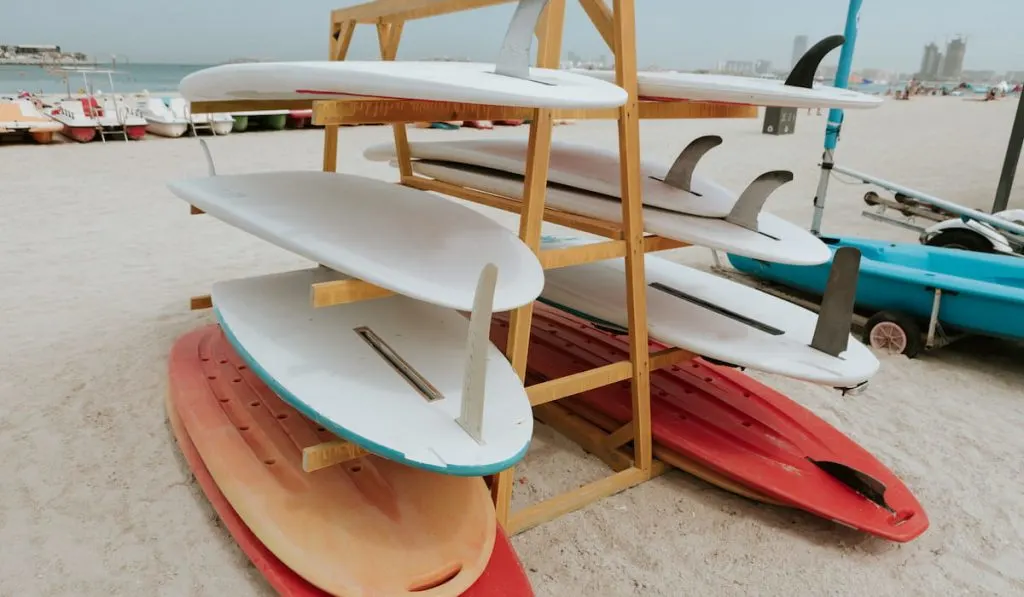
To choose the perfect surfboard for yourself, you need to consider a few personal factors. These factors include weight, height, preferred wave type, level of experience, and sometimes, your age.
Besides the personal factors, you also have to consider some surfboard elements, which include the surfboard material, length, and volume of the board.
The personal factors determine what you look for in surfboard elements.
Volume
The volume of a surfboard determines its buoyancy – its floatation. It is an indication of how much weight the surfboard can float.
While volume may not be much of a factor to experienced surfers, it is especially useful to beginners.
The table below is a weight-volume-experience chart that can guide you when purchasing a surfboard:
| Weight | Weight | Beginner | Intermediate- Beginner | Intermediate | Intermediate- Advanced | Advanced |
| Lbs. | kg | Liters | ||||
| 80 | 36.3 | 31.89 | 23.92 | 19.93 | 16.74 | 15.95 |
| 90 | 40.8 | 34.28 | 25.71 | 21.43 | 18.00 | 17.14 |
| 100 | 45.4 | 36.28 | 27.21 | 22.68 | 19.05 | 18.14 |
| 110 | 49.9 | 38.91 | 29.18 | 24.32 | 20.43 | 19.46 |
| 120 | 54.4 | 41.36 | 31.02 | 25.85 | 21.71 | 20.68 |
| 130 | 59 | 42.45 | 31.84 | 26.53 | 22.28 | 21.22 |
| 140 | 63.5 | 44.44 | 33.33 | 27.78 | 23.33 | 22.22 |
| 150 | 68 | 47.62 | 35.71 | 29.76 | 25.00 | 23.81 |
| 160 | 72.6 | 50.79 | 38.09 | 31.75 | 26.67 | 25.40 |
| 170 | 77.1 | 53.97 | 40.47 | 33.73 | 28.33 | 26.98 |
| 180 | 81.7 | 57.14 | 42.86 | 35.71 | 30.00 | 28.57 |
| 190 | 86.2 | 60.32 | 45.24 | 37.70 | 31.67 | 30.16 |
| 200 | 90.7 | 63.49 | 47.62 | 39.68 | 33.33 | 31.75 |
| 210 | 95.3 | 66.66 | 50.00 | 41.67 | 35.00 | 33.33 |
| 220 | 99.8 | 71.83 | 53.88 | 44.90 | 37.71 | 35.92 |
| 230 | 104.3 | 77.19 | 57.89 | 48.24 | 40.52 | 38.59 |
| 240 | 108.9 | 82.72 | 62.04 | 51.70 | 43.43 | 41.36 |
*Surfers who weigh 250 pounds or more will need a surfboard with a volume of at least 100 liters.
Dimensions of the Board
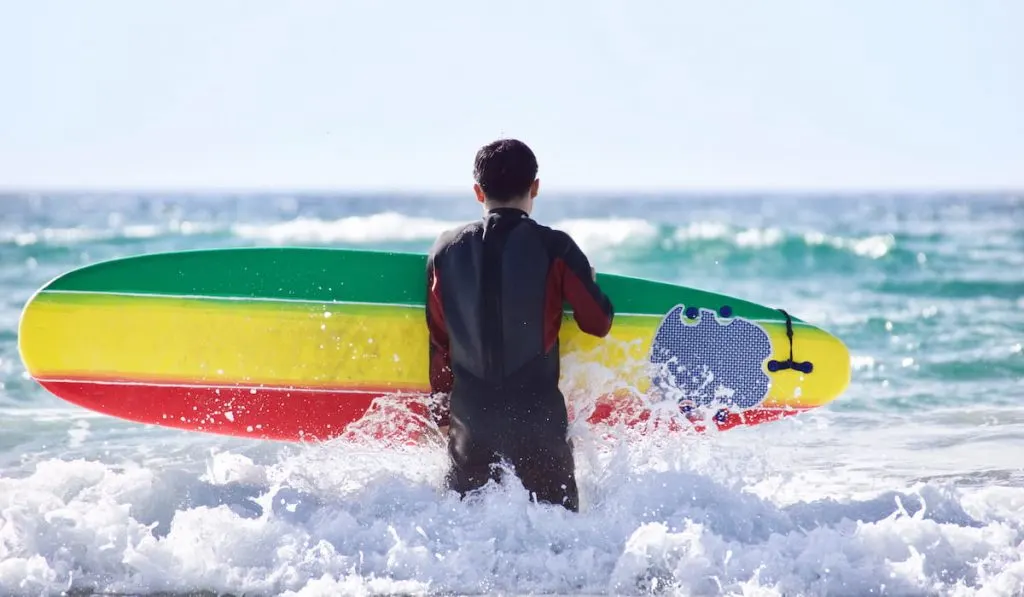
The length, thickness, and width of the board are important factors in the stability, versatility, and paddle power of a surfboard.
If you intend to ride bigger waves, your sight should be on long and wide surfboards. Large surfboards are easier to paddle, they paddle faster, and they give high wave counts.
Medium-sized surfboards are more suited for versatility. They can be used for various types of waves by big people, small people, and even children.
Level of Experience
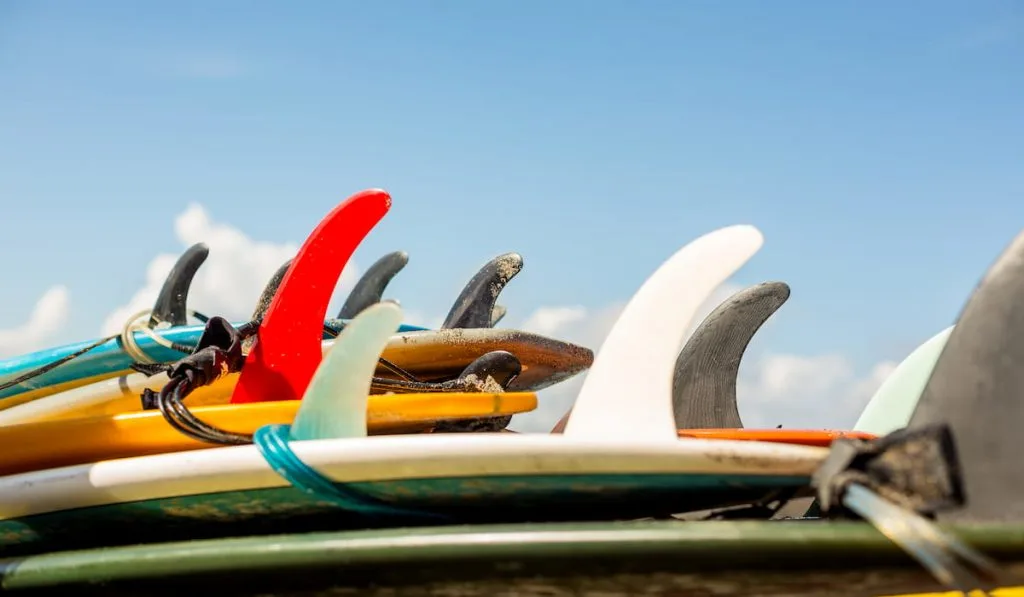
As you garner surfing experience, you become more stable and more comfortable. So, even with a small-sized surfboard, you will still surf well.
For beginners, the priority is a big board—one that offers balance, easy paddling, and floatation. When you become confident performing the basics of surfing, you can move on to intermediate surfing.
An intermediate surfer should be able to use surfboards somewhat smaller than beginners. The priority for them is a board that offers balance but can trim and carve waves.
Advanced surfers can work with almost anything. They know the capabilities of different surfboard sizes and which will work best for certain rides.
Wave Type
The type of waves you will encounter in your locale will also factor into the size of the board you get. Apart from that, the type of waves you prefer to ride through is another important factor.
Generally, for slower waves, you need long surfboards with high volumes.
Long surfboards catch slow waves easily, and they give you a high wave count too.
For hollow and steep waves, you should look towards short surfboards like fish boards. They are more suited for such wave types, and they are easier to maneuver.
Surfboard Material
Surfboards are typically made with a foam core. The good thing about this is that surfing, paddling, floating, and catching waves is much easier with them.
In recent times, some companies have evolved to making surfboards with foam on the outside too. These types of boards are called soft top surfboards, and they are optimized for safety.
Whether you are big or small, soft top surfboards offer you extra safety. If you ever hit your head against such boards, you are less likely to get injured.
Is There a Maximum Weight for Surfing? Or a Minimum Weight?
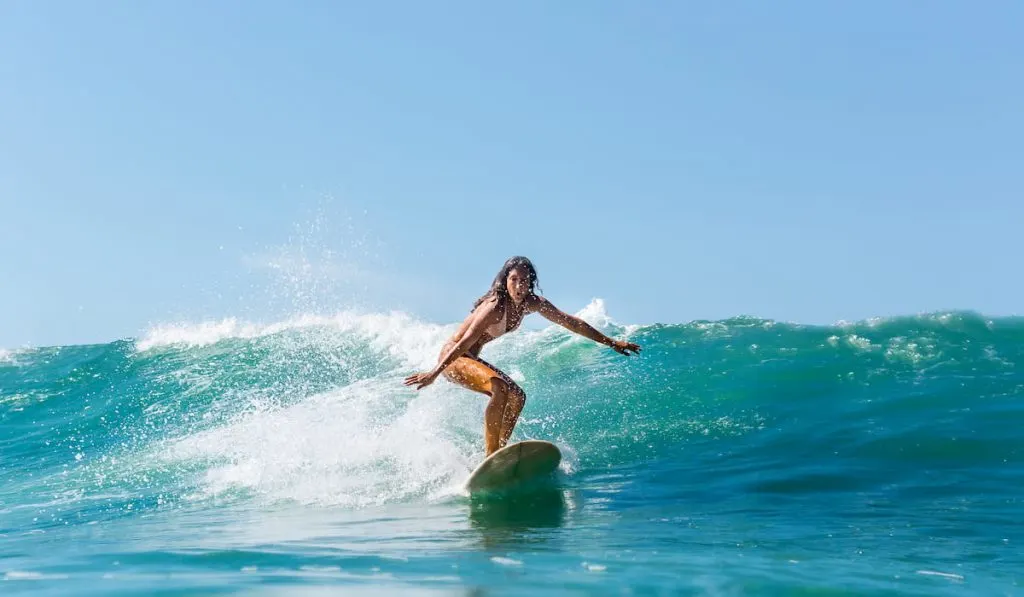
Well, the good news is there is no weight limit in surfing.
Whether professionally or recreationally, there is no maximum or minimum weight for surfing. If you get the right surfboard and know how to surf, you should be fine.
On average, male surfers in the World Surf League Championship Tour weigh about 169 lbs.
You will find that some professional surfers even fall within a weight range of 190-220 lbs. Laird Hamilton, a top professional free-surfer, weighs about 215 lbs.
Jordy Smith and Zeke Lau, two professional surfers on tour, weigh 193 lbs. and 202 lbs. respectively.
How to Find the Best Surfboard for Big Guys
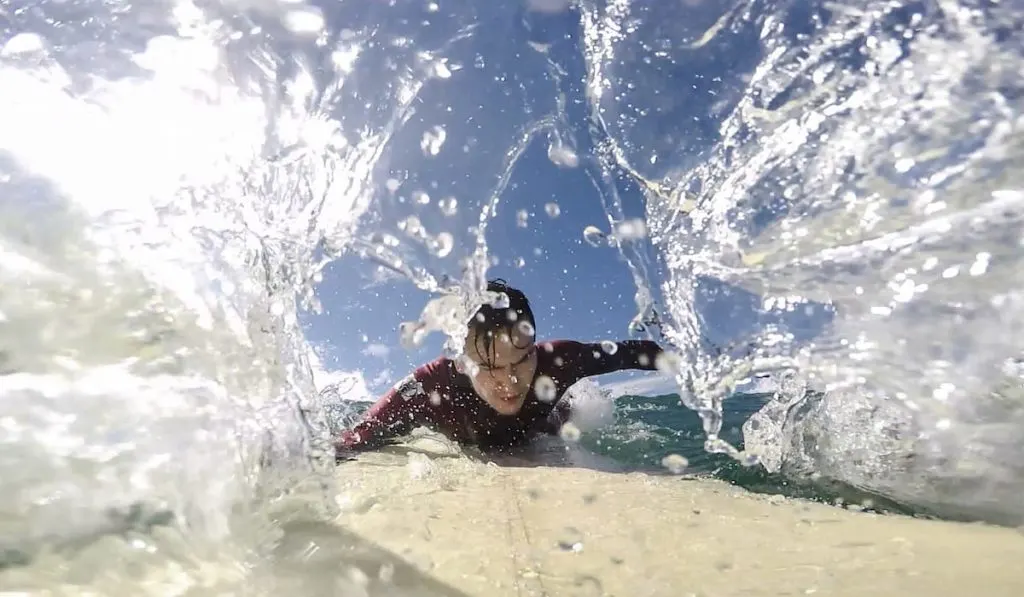
For big people, finding a suitable surfboard in the market can be a drag. Options are limited for plus size guys, but they are not impossible to find.
For big guys trying to find the best surfboard, the first thing to consider is the volume. The bigger and taller you are, the higher the volume of the surfboard you need.
You may check amongst the regular options to see if there is one that fits you. Alternatively, you may get a builder to customize one for you. The weight-volume-experience chart above can guide you with this.
After considering volume, you should consider the type of wave you intend to go after. Big guys may find it hard to conquer some small and weak waves. To avoid this, you can get a builder or manufacturer within your preferred surfing locale to customize a board suitable for the waves in that area.
The builder would know a lot about the waves and how to customize a board to navigate them.
Then you should also consider the size of the surfboard. Generally, bigger people need longer, wider, and thicker boards. The size of the board could also be larger depending on your experience and your height.
How to Find the Best Surfboard for Bigger, Heavier Beginners
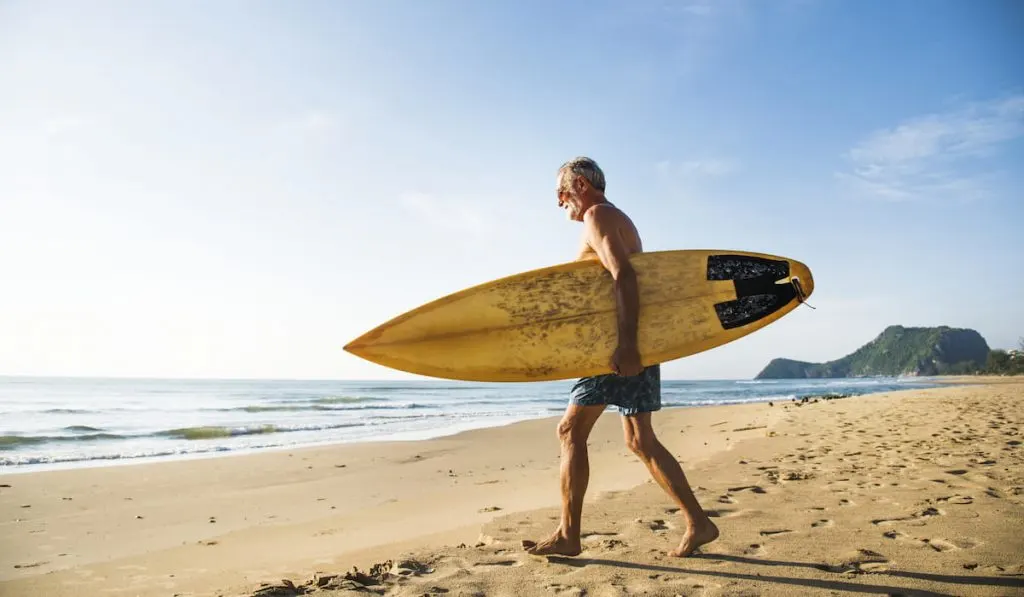
For big or heavy beginners, the situation is quite like that of other big guys. They also have to consider volume, wave type, and size.
Generally, big or heavy beginners need extra big boards. You may search amongst the regular-sized boards for a fitting option. Alternatively, you may get a builder to build one for you.
Beginners need floatation. Surfboards that offer enough floatation are easy to paddle. They also get in waves faster, so they make for the perfect option for beginners.
As a big beginner, prioritize a surfboard with a high volume. Typically, surfboards that are long and wide will offer volume, stability, and floatation.
You may get the builder to shape the surfboard in line with the type of wave you intend to ride. But if you are getting a regular board in the market, ask to know which board suits your type of wave.
Final Take
Surfboards have weight limits. The same way one surfboard does not fit all purposes is the same way surfboards are not suitable for all weights.
When choosing the size of the board that suits you, you should think through several factors. These factors include your weight and height, dimensions of the board, wave type, and your experience level.
Resources
- https://surfersfootprint.com/surfing-weight-limits-how-heavy-can-you-be-and-still-surf/
- https://www.quora.com/Can-an-overweight-person-become-a-surfer-without-reducing-his-her-weight
- https://www.islesurfandsup.com/surf-101/surfboard-size-and-weight-chart/
- https://wowtravel.me/surfboards-for-bigger-guys/
- https://www.surfertoday.com/board-size-chart/surf
